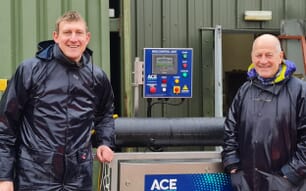The escape of fish from sea-cage aquaculture is perceived as a threat to natural biodiversity in Europe's marine waters. Escapes of fish from sea-cages have been reported for almost all major species presently cultured across Europe, including Atlantic salmon, Atlantic cod, rainbow trout, Arctic charr, halibut, sea bream, sea bass and meagre.
The present level of escapes is regarded by many as a problem for the future sustainability of aquaculture as escapees can have detrimental genetic and ecological effects on populations of wild fish. Moreover, escape events are often reported in the popular press when they occur and the aquaculture industry is invariably painted in a negative light on such occasions.
Technical and operational failures of fish farming technology cause escapes leading to escapes of adult fish. Cages sometimes break in storms, wear and tear of the netting causes holes, and operational accidents lead to spills of fish. Escapes of fertilised eggs may also occur if fish such as cod and sea bream spawn within sea-cages.
New Technology
The new project, Prevent Escape (www.sintef.no/preventescape), aims at improving both fish farming technology and how the technology is used in the sea to better prevent escape incidents.
The project is specifically designed to conduct and integrate biological and technological research on a pan-European scale to improve recommendations and guidelines for aquaculture technologies and operational strategies that reduce escape events.
The 3-year project (April 2009 – April 2012) involves 11 partners from 6 countries (Norway, Greece, Spain, Malta, Scotland and Ireland) and is led by SINTEF Fisheries and Aquaculture.
Work Packages
The project is divided into work packages (WPs) that focus on gathering knowledge to address key aspects of the escape problem.
MAP Escape will assess technical and operational causes of escape incidents.
PRE Escape will determine the inherent behaviours that pre-dispose certain species of fish towards a higher probability of escaping.
EGG Escape will assess the extent of escapes of fertilised eggs from sea-cages.
POST Escape will assess the extent of escapes of adult fish from sea-cages and further document the dispersal of escapees to develop and test recapture strategies.


